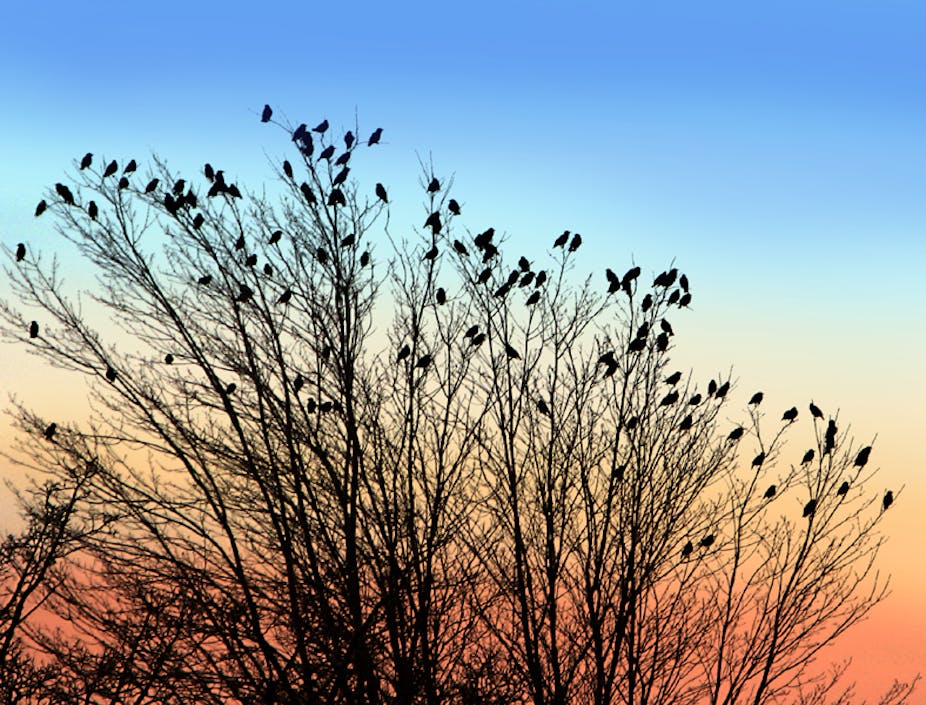Today’s land birds, from ducks to eagles, shared a common ancestor after dinosaurs went extinct – just one finding from bird gene studies published in journals, including Science and GigaScience, today.
Genetic data of 48 bird species were sequenced in a massive international collaboration to create a new and detailed version of the avian tree of life.
“Birds have always been very good for this kind of work because we have a greater understanding about the world’s birds than we do about any of the other vertebrate groups,” Simon Griffith, Associate Professor of Avian Behavioural Ecology at Macquarie University, said.
“We are familiar with almost all the birds in the world – around 10,000 species – and we know how they differ, in important characteristics such as how long they live, how many offspring they have each year, how old they are when they breed.”
About 66 million years ago, a mass extinction event wiped out around 80% of Earth’s plant and animal population, but opened the door for the rapid expansion of birds.

Only a few bird lineages survived the mass extinction, and most modern land birds such as songbirds, owls and woodpeckers share a common apex predator ancestor.
This top-of-the-food-chain brute was similar to the giant terror birds which stalked the Americas between 27 million and 15,000 years ago.
“The main problem in resolving the relationships among birds is that they diversified very quickly,” Research Director and the Curator of the Australian National Wildlife Collection, CSIRO, Leo Joseph said.
Extreme adaptations
Birds are among the most widespread land animals and have experienced evolutionary adaptations to extreme environments. Penguins live in some of the harshest conditions on Earth, and DNA analysis, published in GigaScience, confirmed fossil evidence that penguins first appeared in Antarctica around 60 million years ago.
“If you have a complete genome, you can compare the variations between the chromosomes and get a picture of the population history” Sankar Subramanian, a research fellow at Griffith University and who worked on the project, said.
“By comparing the complete genome of penguins living today we can track when evolutionary changes occurred, up to 200,000 years ago.”
This aspect of the research, Emperor penguins were found to have a stable population, but Adélie penguins present a very different story, showing fluctuations in population matching extreme climactic periods.
In a warmer period 150,000 years ago there was a large population explosion, but in a more recent glacial period the population declined dramatically.

Rather than being evolutionary in origin, Dr Subramanian explained the fluctuations depended on “how much ice-free land is available for nesting and breeding”.
Compared to other bird species, penguins had more genes for lipid metabolism, which is essential for forming layers of blubber to withstand the cold.
This subgroup of the project hopes to look at penguins which live in tropical and temperate waters such as the Galápagos Islands and New Zealand to see how more recent evolutionary adaptations have affected genes of modern penguins.
Now that these hallmark studies have been completed, and the bird tree of life established with some degree of authority, it provides a scaffold for further research.
“This new study helps tease apart the rapid diversification of birds, which has been a long-standing problem,” Dr Joseph said.
“We can now address really interesting questions,” Associate Professor Griffith said. “When did song learning evolve? When did birds evolve different patterns of parental care?”
These insights provide sought-after answers about how species can diversify so quickly to fill the ecological niches.
This articled was edited on Friday December 12, 2014, to clarify some quotes by Dr Leo Joseph.

